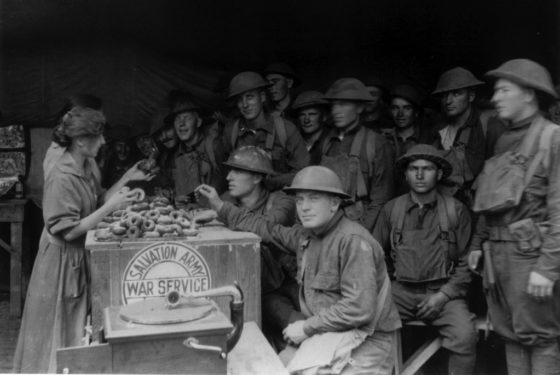
“Their efforts have been all but forgotten amid the wider narrative of the First World War.”
BY LATE 1916, the Allied armies on the Western Front were being bled white.
The British had lost more than 600,000 men at the Somme in four months alone, while France had sacrificed a half-million soldiers holding off a 300-day German onslaught at Verdun. With the dead piling up and recruitment targets falling short, commanders needed every able body they could muster to man the front lines.
Yet by the war’s third year, there were simply not enough hands available for other tasks: trench digging duties, road maintenance, or even just filling sandbags. While fresh fighting men were hard to come by, the war effort also needed labourers… and it needed them fast. Desperate, Allied commanders eventually did what plantation owners in the Caribbean and railway barons in North America had been doing for decades: They hired Chinese hands to do the dirty work — more than 140,000 of them.
Although the men of the Chinese Labour Corps, or CLC as it was known, were armed only with picks and shovels rather than rifles and grenades, their contribution to the Allied victory was no less considerable. Yet their efforts have been all but forgotten amid the wider narrative of the First World War. Hired for as little as one pound and paid a few pennies a day, the men of the CLC hauled supplies, constructed fortifications, maintained fighting vehicles and repaired roads and bridges – often under horrendous living conditions and frequently while under enemy fire. [1] What’s more, it wasn’t until the last decade that their efforts and sacrifices were even mentioned in remembrance services. [2]
The Georgia Strait, a Vancouver-area news magazine is one of a handful of media outlets to shine the spotlight on the forgotten men of the CLC. In an article appearing last week, The Straight reported how tens of thousands of Chinese workers passed through British Columbia on their way to the distant killing fields of Flanders. According to the story, after crossing the Pacific, members of the corps were interned on Canada’s west coast for weeks before being loaded onto trains and transported across the continent to the Atlantic and beyond. Others reached Europe via the Indian Ocean and the Suez. And according to the magazine, the North American leg of this epic journey is now the subject of a book by a B.C. historian named Peter Johnson. (To read the full piece, click here.)
Although officially neutral until 1917, the four-year-old Republic of China permitted France and Britain to recruit the colossal workforce from the ranks of the struggling country’s impoverished peasant classes. Those who endured the 20,000 km, three-month journey joined a growing army of other foreign labourers from as far afield as Egypt, India and the West Indies. In all, nearly 400,000 migrant workers from various developing nations and colonies toiled for the British Empire along the Western Front as well as in the Middle East theatre. For their part, the French employed nearly 50,000 Chinese workers of their own.
London’s War Office would have likely increased the number of foreign labourers were it not for a crippling shortage of vessels, which prevented more volunteers from being transported.
Interestingly, the CLC’s work didn’t end with the ceasefire in 1918. After the war, most remained in France to help fill in trenches, dispose of unexploded ordnance and recover the dead from No Man’s Land. [3] Many toiled until midway through 1919, at which point the units were deactivated and shipped home.
Although the men of the CLC, along with other foreign labourers, mostly drudged behind the lines where it was relatively safe, as many as 10,000 perished while in the employment of the Allies. Some were killed by enemy fire, however the lion’s share fell victim to the Spanish Flu pandemic of 1918 and 1919. [4] More than 800 CLC men lost in action are interned in 40 military cemeteries across France and Belgium.
At least one member of the Chinese contingent was even decorated by the British army for heroism under fire after rallying his fellow workers during a German artillery bombardment in the spring of 1918. Eventually, all members of the CLC were awarded a bronze medal for their services.
Watch for more coverage of the foreign labourers of the First World War as the 100th anniversary of the conflict’s outbreak draws near.
SOURCES
http://en.wikipedia.org/wiki/Chinese_Labour_Corps
http://www.heritageworldmedia.com/downloads/pdfs/War 3 Draft.pdf
http://www.1914-1918.net/labour.htm
http://www.remembrancetrails-northernfrance.com/learn-more/nations-in-war/chinese-labourers-in-northern-france-during-the-great-war.html










Really interesting, thanks, Too often things like this are just never mentioned.
I agree. Thanks.
It seems a typical response by the beaurocracy and leaders of most countries. We want your help here and now. Go when we don’t need you. We offer no gratitude just go back to where you came from asap.
As in Palestine ww1 and Indian troops North Africa ww2